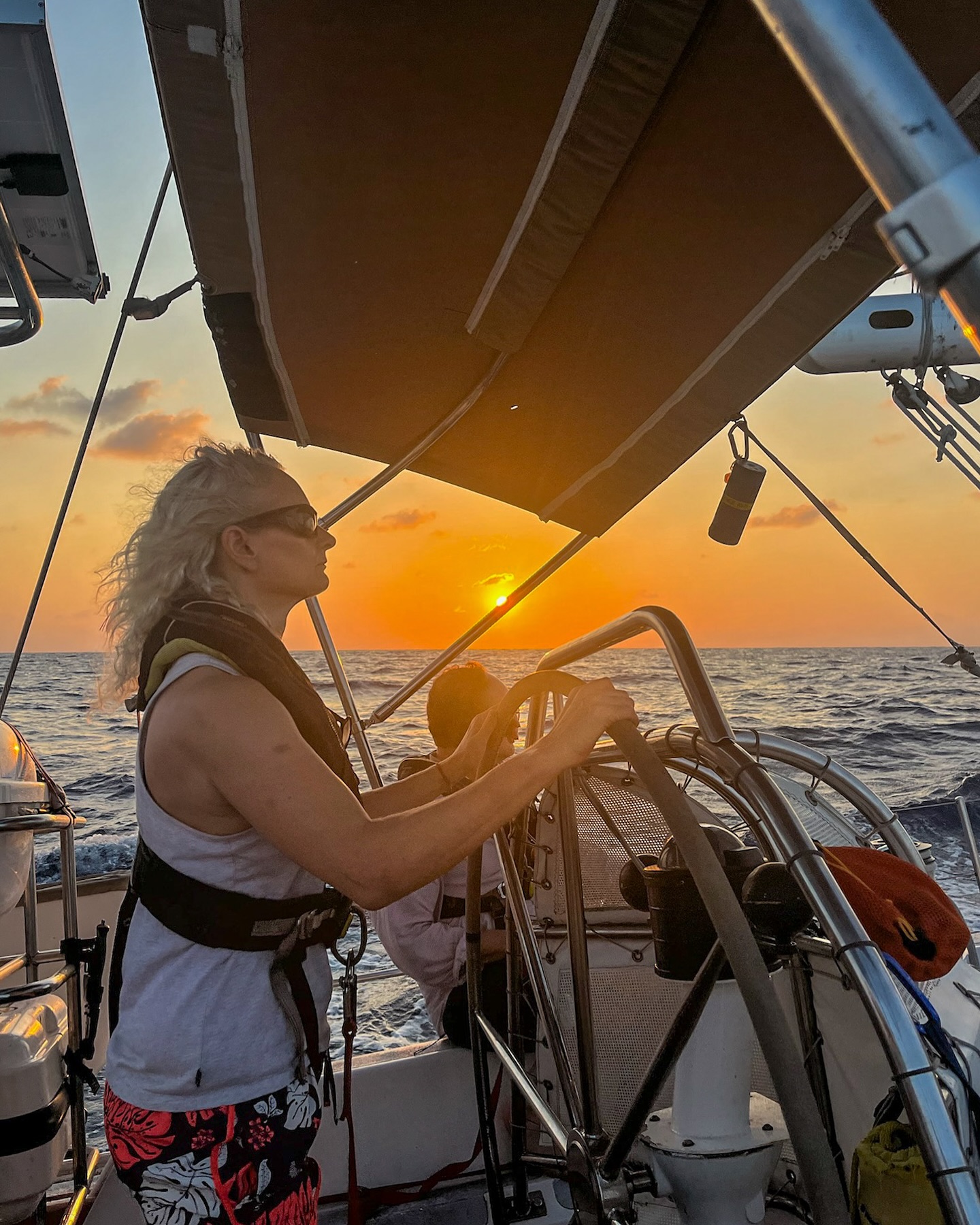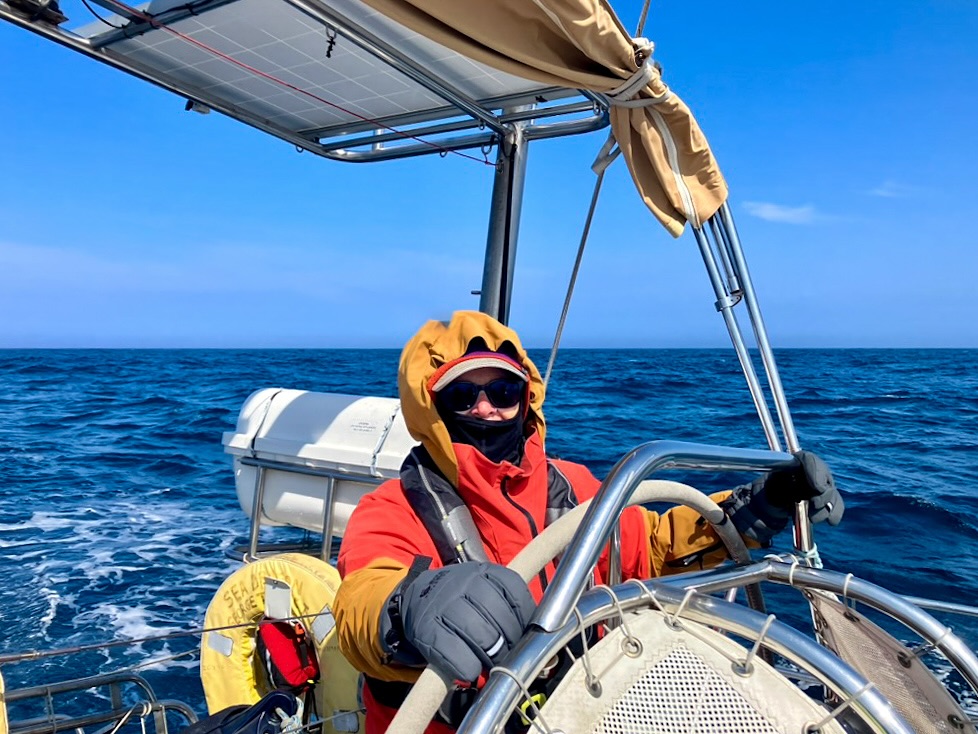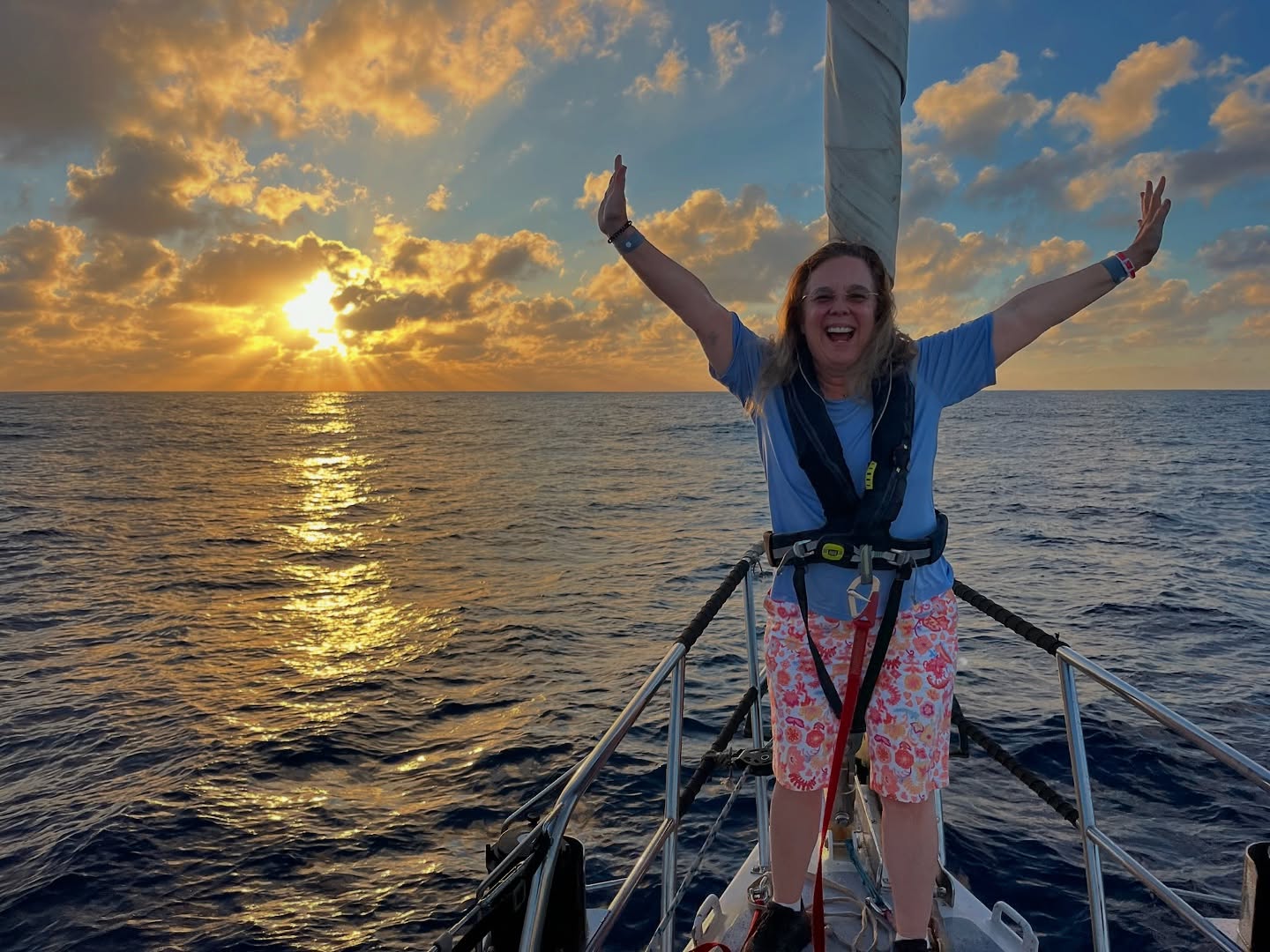Saturday morning we stepped off Sea Dragon and onto a solid jetty, the first land underfoot for well over a week. It swayed alarmingly – despite being made of concrete. We’d arrived at Horta marina the previous evening, too late to clear customs, and stayed on the boat. That night, by now so used to falling asleep in motion, our berths surging and swaying through the waves, the sudden lack of movement felt unnatural and abrupt, as if someone had slammed on the brakes. These are truly strange transitions, I’m finding, from ocean and motion to stationary land; from the mini-world of our boat, at once small and yet travelling through an immensity of ocean and sky, to the endless-but-limited options of land-life. On the yacht, we have what we have and no more. Each other, the things on board, the things we brought with us, the sea and the sky and the wildlife. Back on land, it’s unnerving how quickly the lure and undertow of materialism can suck you back in; endless shiny commodities calling out shallow promises to our magpie selves from shop windows. ‘Buy me, buy me!’ ‘I will enhance your life!’
The jetties and harbour walls are covered with multi-coloured mini-murals, the painted legacies of hundreds of visiting vessels. Apparently there’s one from a previous Sea Dragon visit though I haven’t found it yet. We faltered our way across them, looking for Isabel from ‘No More Plastic Bags for the Azores’, who’d offered to pick us up first thing and take us to join a river bed clean. After days out of sight of all but sky and sea we were suddenly catapulted back into land-life; hurtling through the small town in her red jeep, a blur of white and orange buildings, scooters and cars, the noise of rubber on cobbles and Massive Attack on the radio. Waiting for the rest of the crew by a traffic island in a tiny village, dazed and in sensory overload, we drank amazing expressos outside a café by an earthquake damaged church, and occasionally clutched at each other at particularly aggressive land-lurches.
Predictably, the clean-up was both depressing and inspiring. A really lovely group of folk, many of them sailors fetched up in the Azores from various parts of the globe, welcomed our slightly manic and largely flip-flopped brigade – all twelve of us from Sea Dragon were there – ignored the inappropriate footwear, and sorted us out with gloves and sacks and a location on the dry river bed. Working our way up over the awkward stones we hauled out decaying bags and old clothes and reams of twine and brittle, broken plastic sheeting. The group I was part of unwrapped an entire tree root choked in tenacious plastic rubbish that seemed to have its own stubborn roots under rocks and in soil. By the end of the morning, three truckloads of sacks full of plastic and other junk – bits of cars, batteries, a dead sofa – stacked up all over the traffic island. Horrible. And also a relief. After days of discussing plastic, debating plastic, immersing ourselves in information and ideas and research about plastic, it was great to be getting our hands dirty doing something practical and at least somewhat constructive. A bit of a closure for some of the circle we’d been going around, and a highly appropriate way to end leg 1 of our voyage. Of course, a traffic island worth of plastic is a drop in the ocean, so to speak. But it still felt good to know that every piece of it we’d hauled there from the river bed would not now be making it to the ocean; and that some creature somewhere would have a little less plastic in its guts.
Check out the Facebook page for No More Plastic Bags for the Azores here.
– Dr. Kate Rawles, Mission Leader, Gyre To Gaia Expedition, September 27, 2014
























